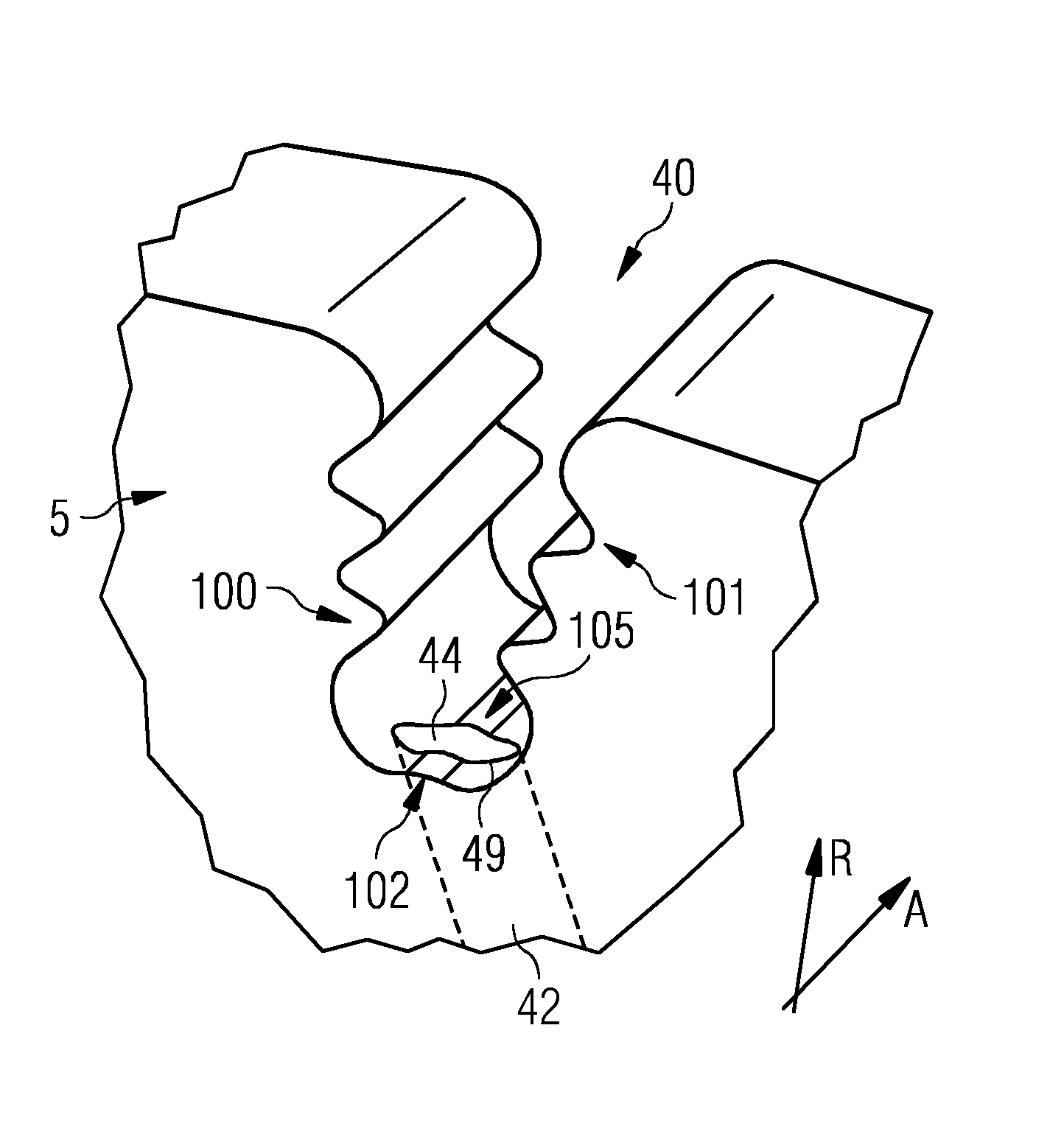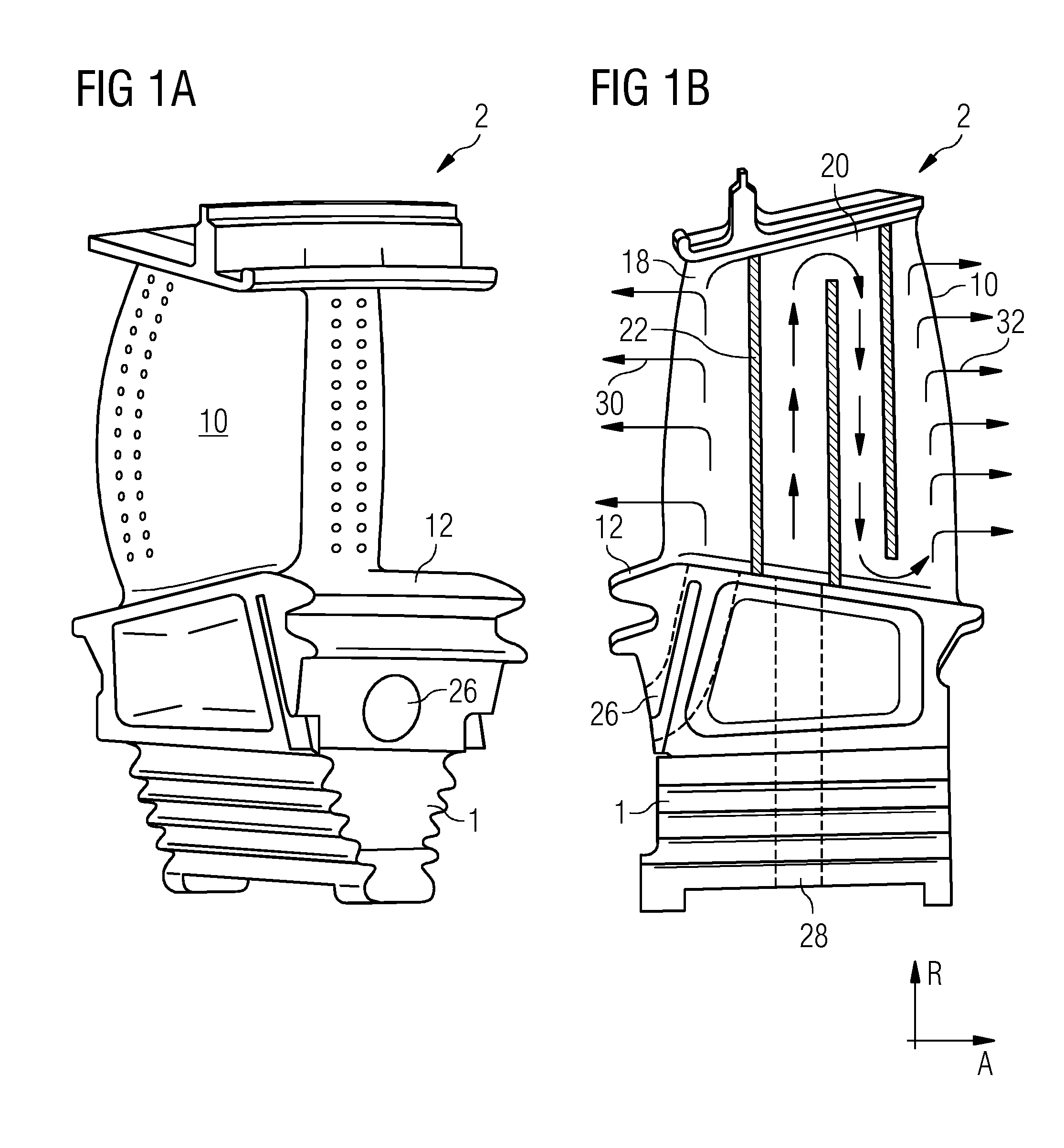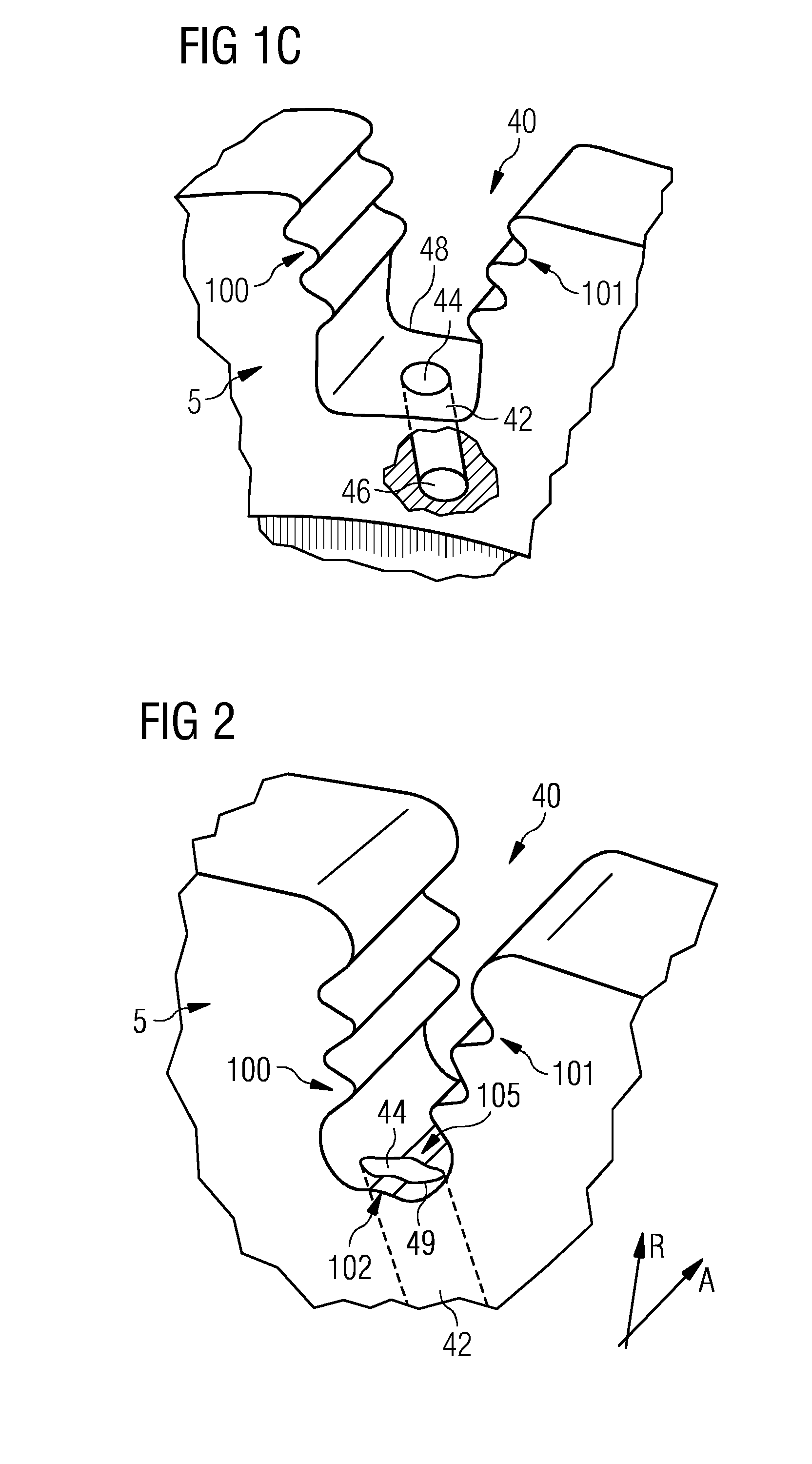Gas turbine arrangement alleviating stresses at turbine discs and corresponding gas turbine
- Summary
- Abstract
- Description
- Claims
- Application Information
AI Technical Summary
Benefits of technology
Problems solved by technology
Method used
Image
Examples
Embodiment Construction
[0047]FIGS. 1A and 1B show a blade design that is known from the prior art and that will slightly be modified according to aspects of the invention, which is then later shown in FIG. 3. FIG. 1C shows a prior art rotor disc design, which is updated according to aspects of the invention as shown in FIGS. 2 and 3.
[0048]FIG. 1A shows a rotor blade 2 of a gas turbine engine in a perspective view. FIG. 1B shows the same rotor blade 2 in a cross sectional view, the cross section being located in a plane defined by an axial direction A—parallel to an axis of rotation of the engine—and a radial direction R—perpendicular to the axis of rotation. The rotor blade 2 is made up of an aerofoil section 10, a platform 12, and a blade root portion 1. The blade root portion 1 engages with a correspondingly shaped slot in a rotor disc. The blade root portion 1 is configured as “fir tree” shape, this being often preferred because of its excellent resistance against the centrifugal forces exerted upon th...
PUM
 Login to View More
Login to View More Abstract
Description
Claims
Application Information
 Login to View More
Login to View More - R&D
- Intellectual Property
- Life Sciences
- Materials
- Tech Scout
- Unparalleled Data Quality
- Higher Quality Content
- 60% Fewer Hallucinations
Browse by: Latest US Patents, China's latest patents, Technical Efficacy Thesaurus, Application Domain, Technology Topic, Popular Technical Reports.
© 2025 PatSnap. All rights reserved.Legal|Privacy policy|Modern Slavery Act Transparency Statement|Sitemap|About US| Contact US: help@patsnap.com



